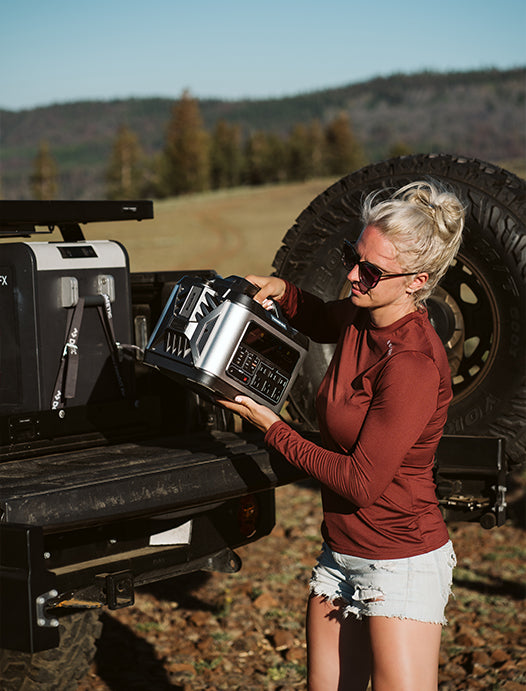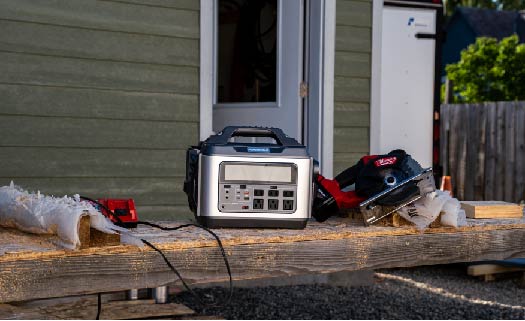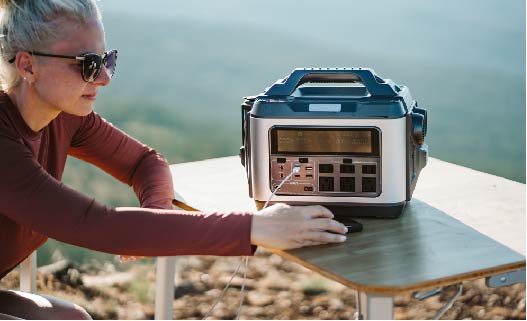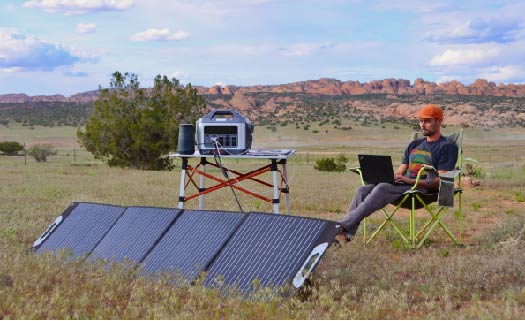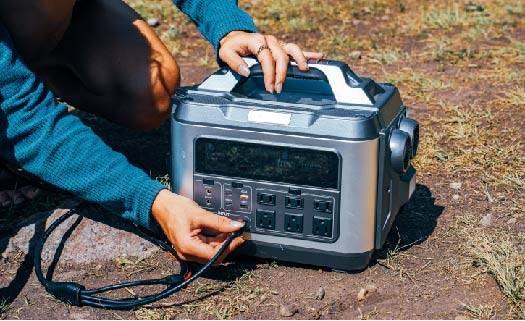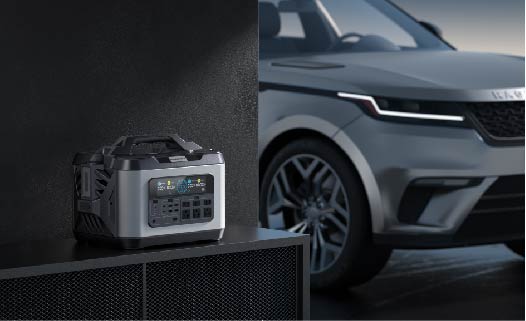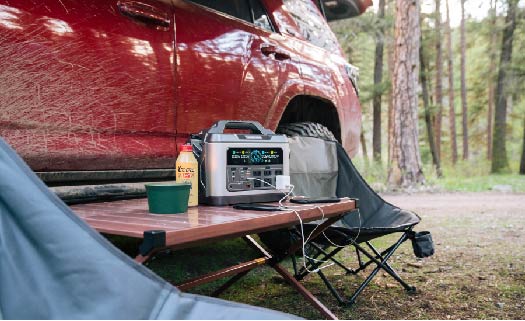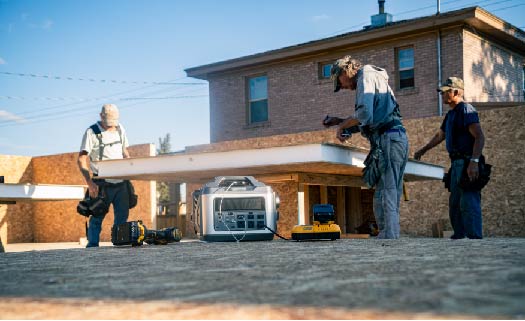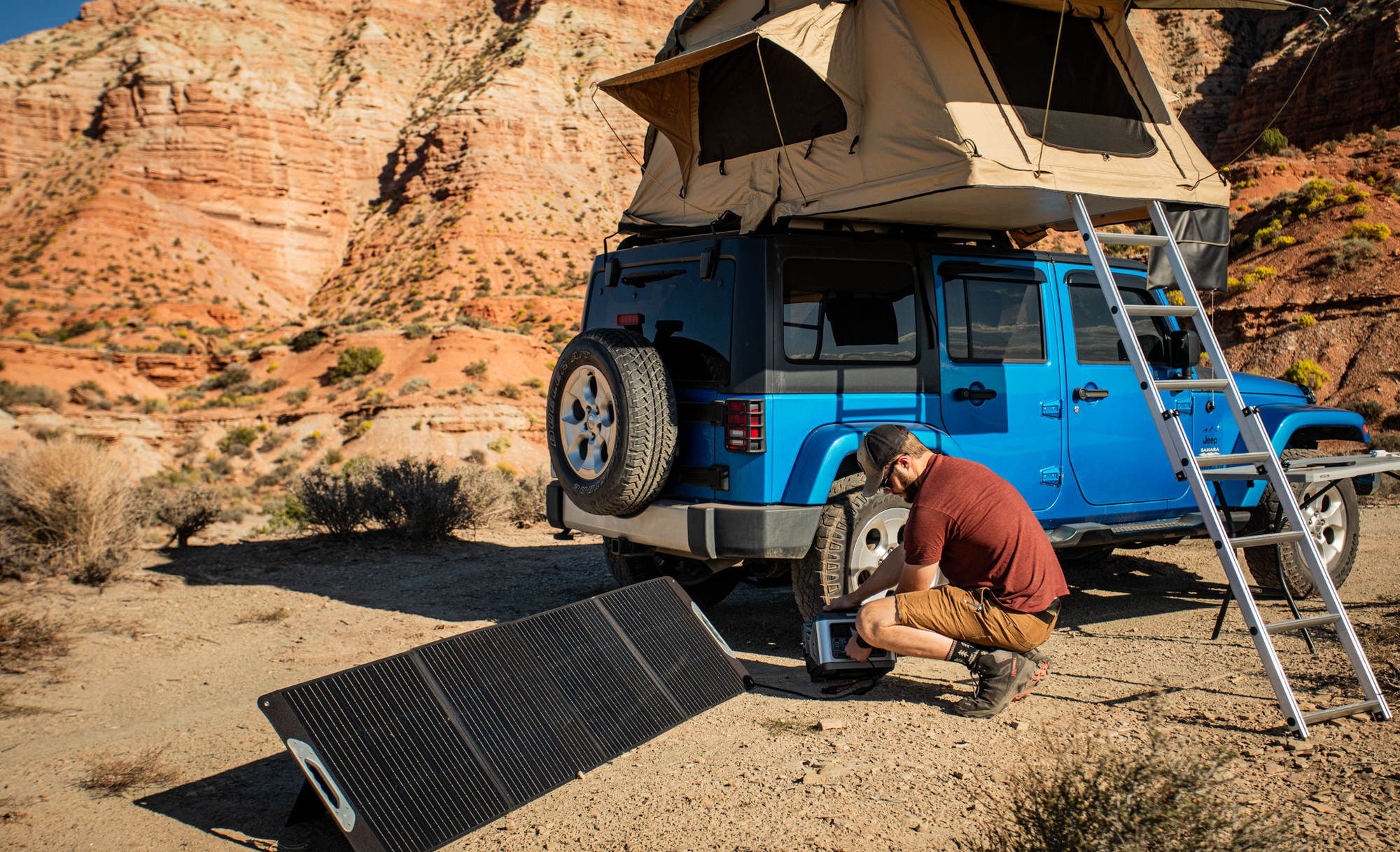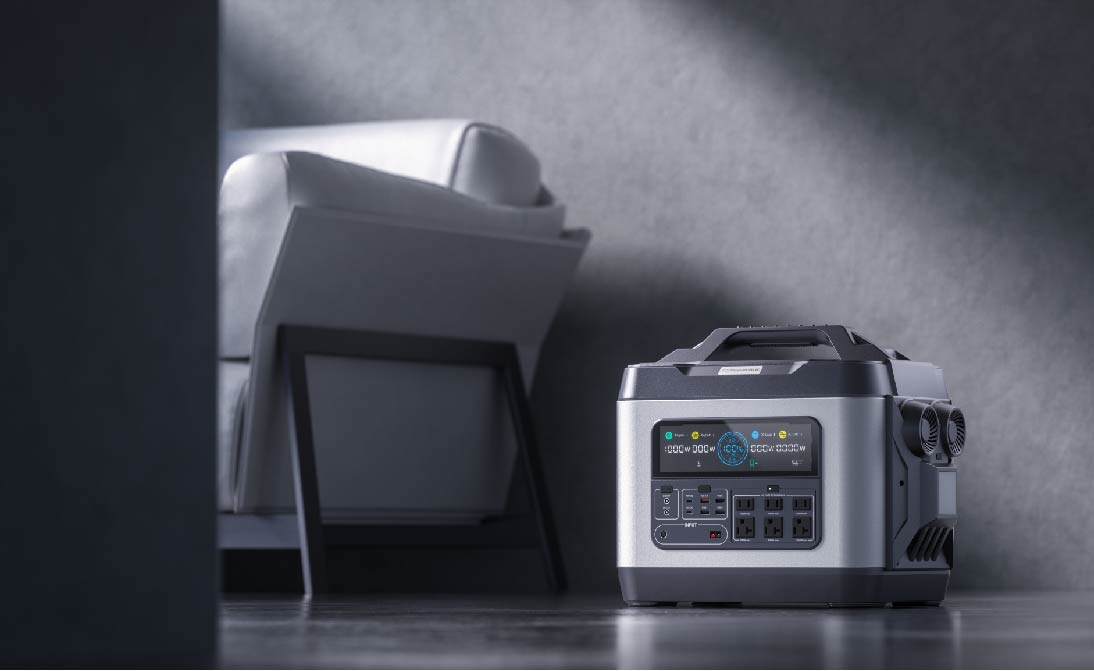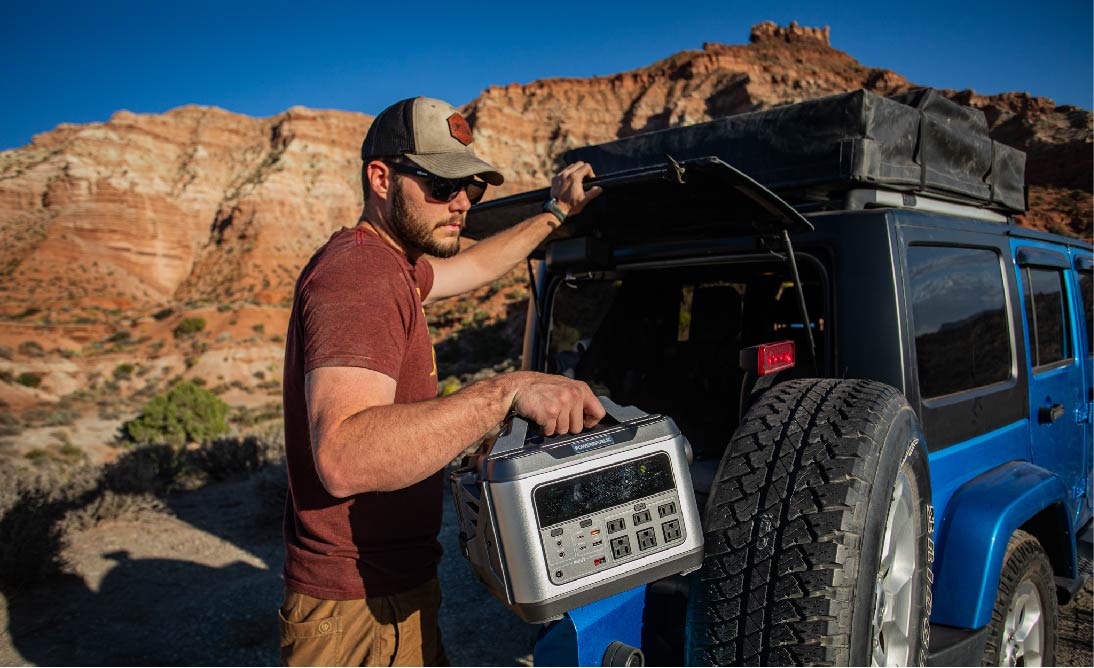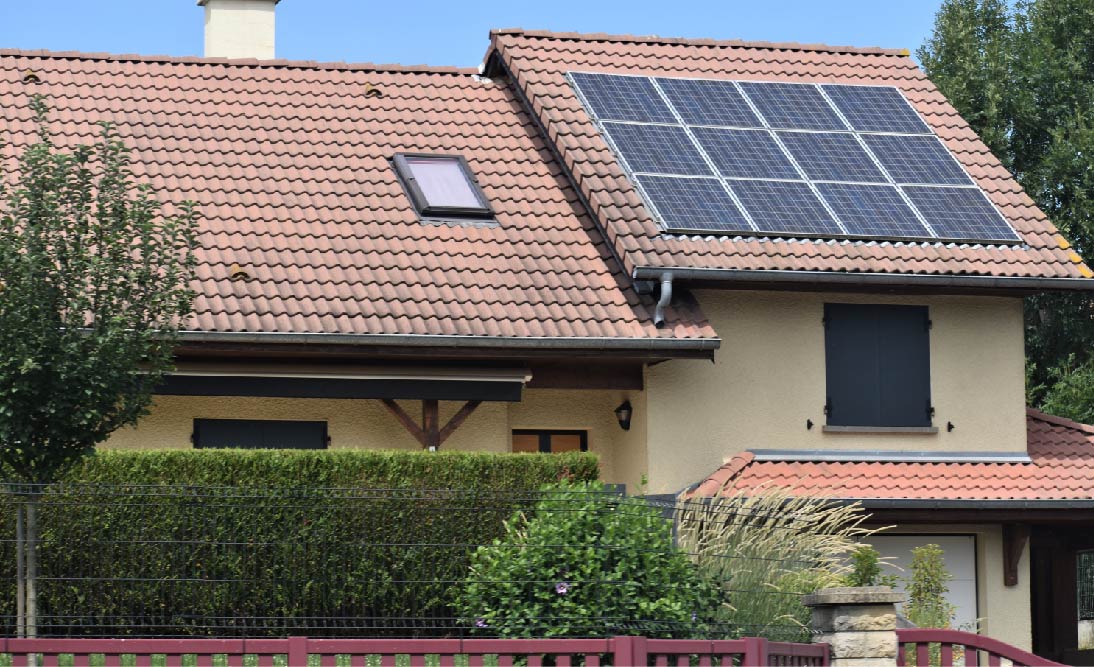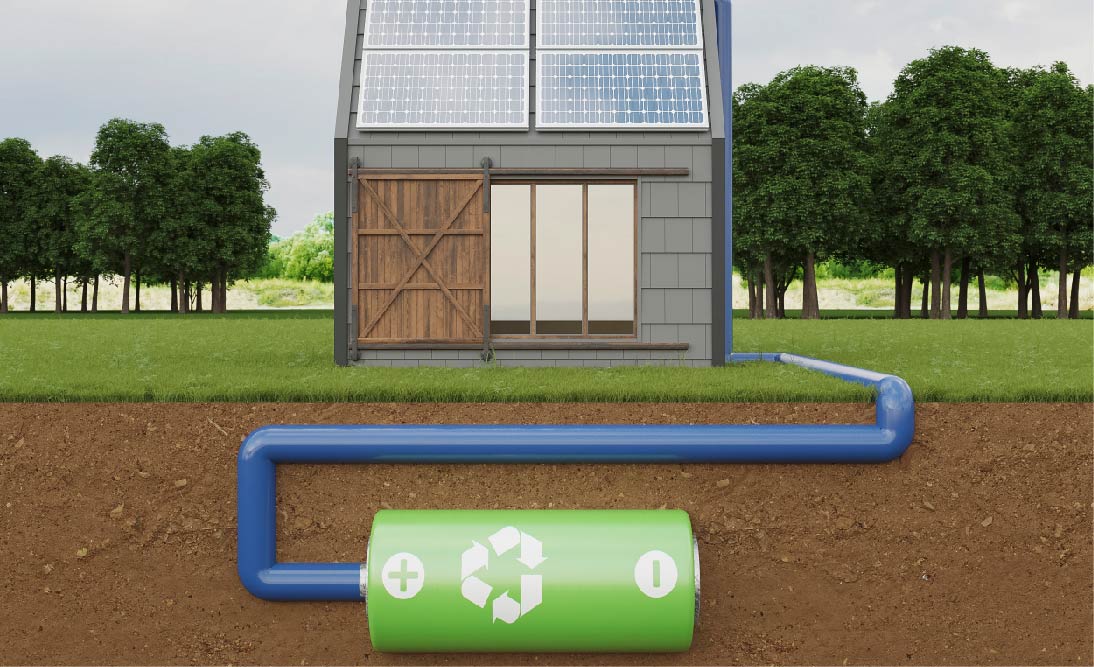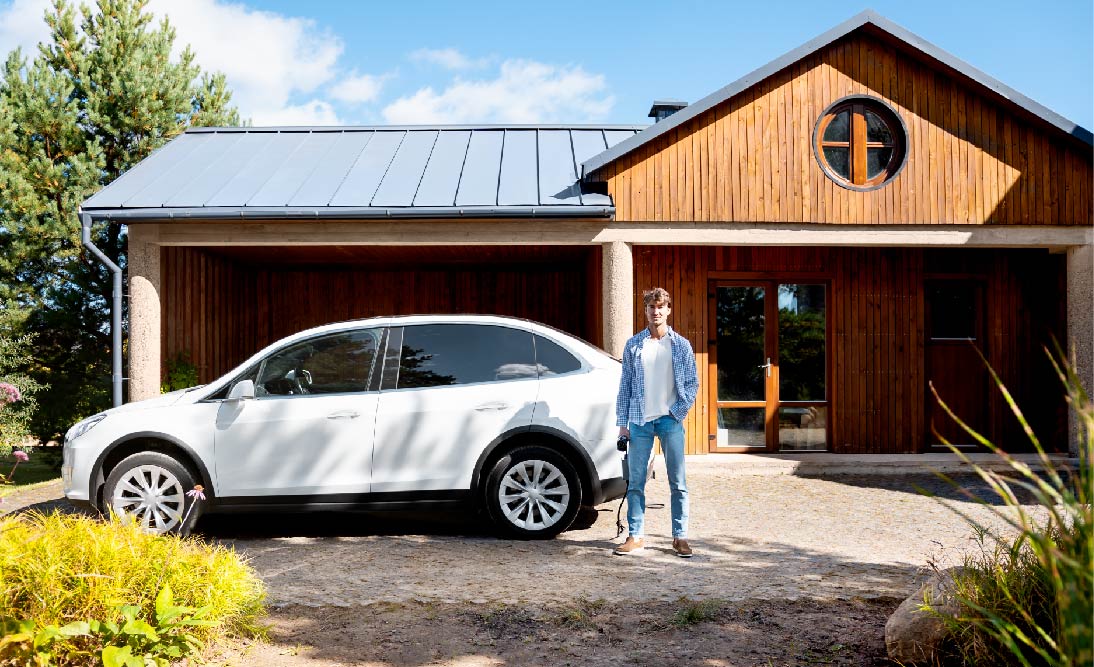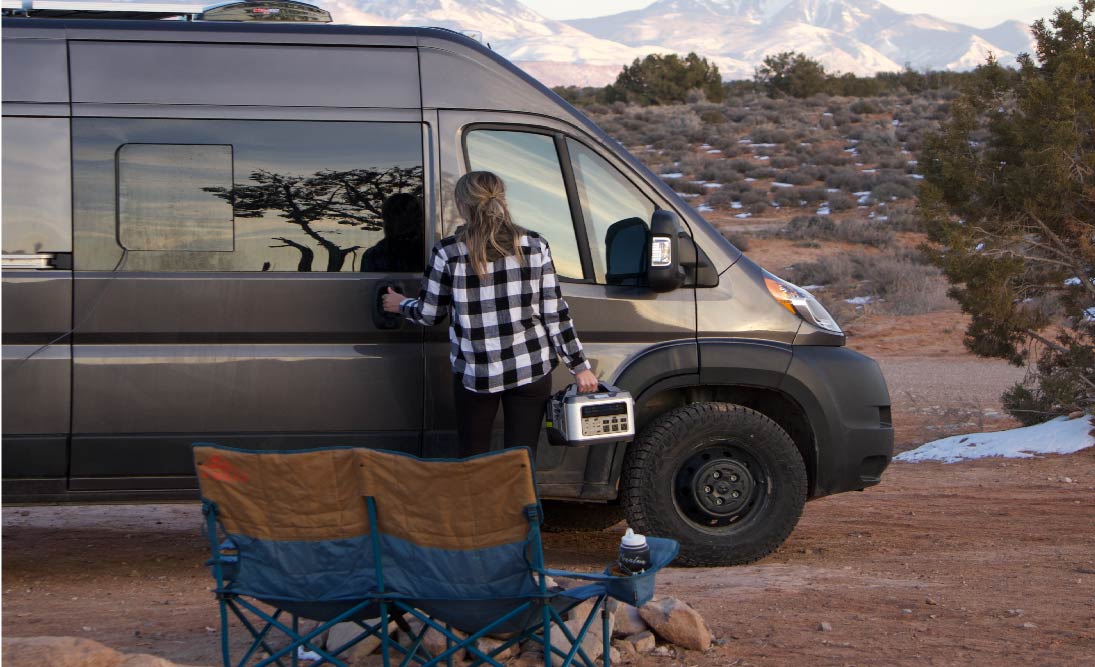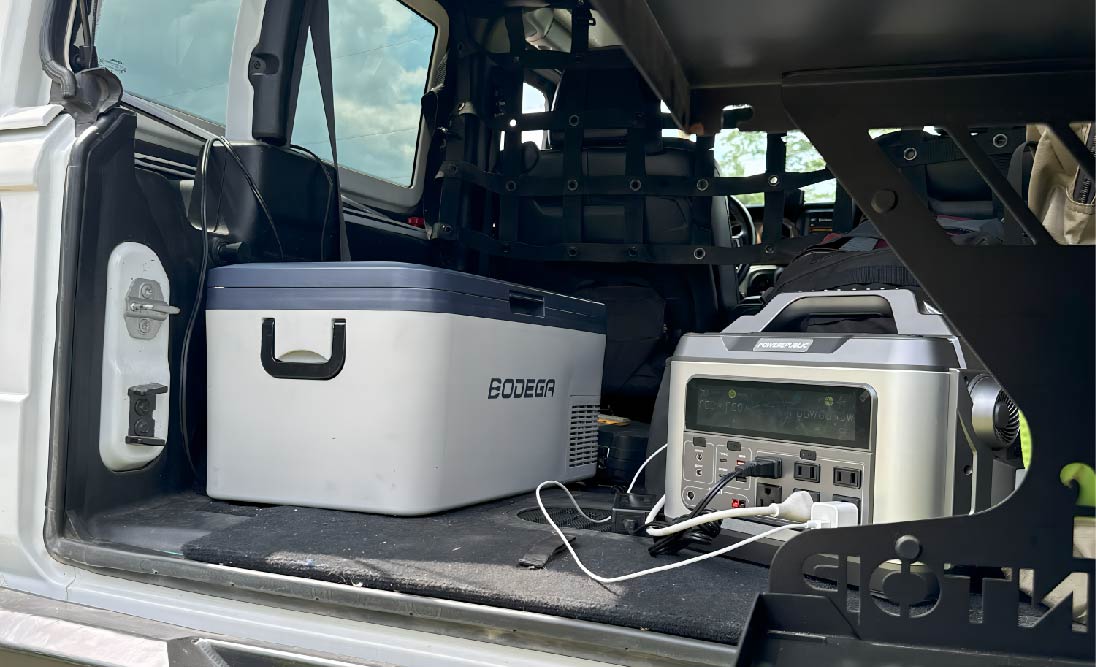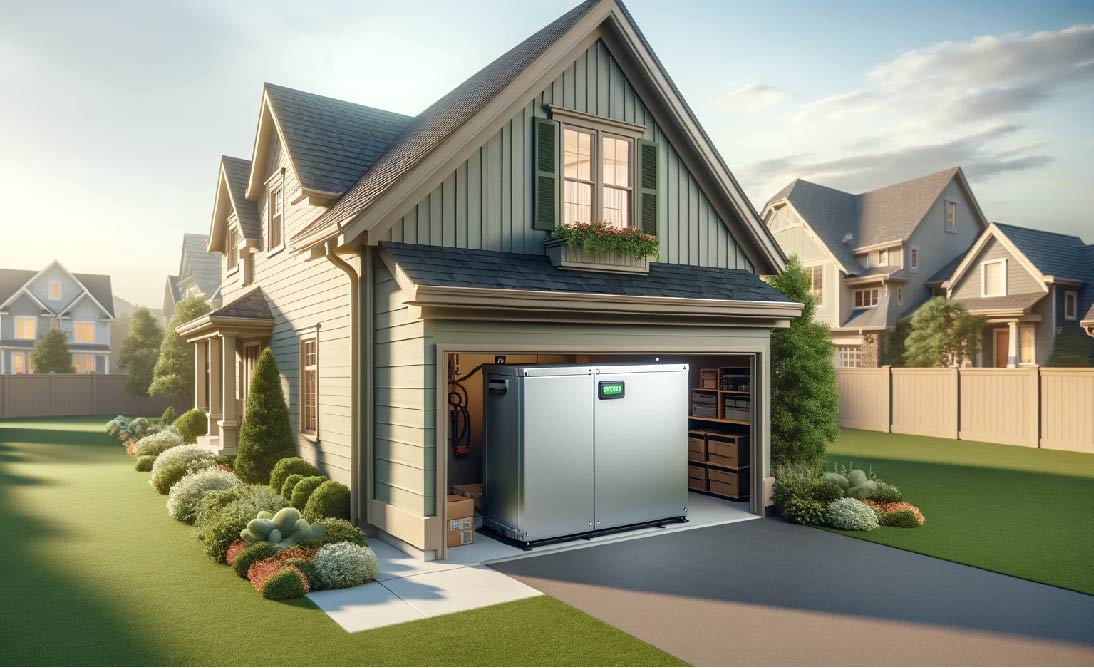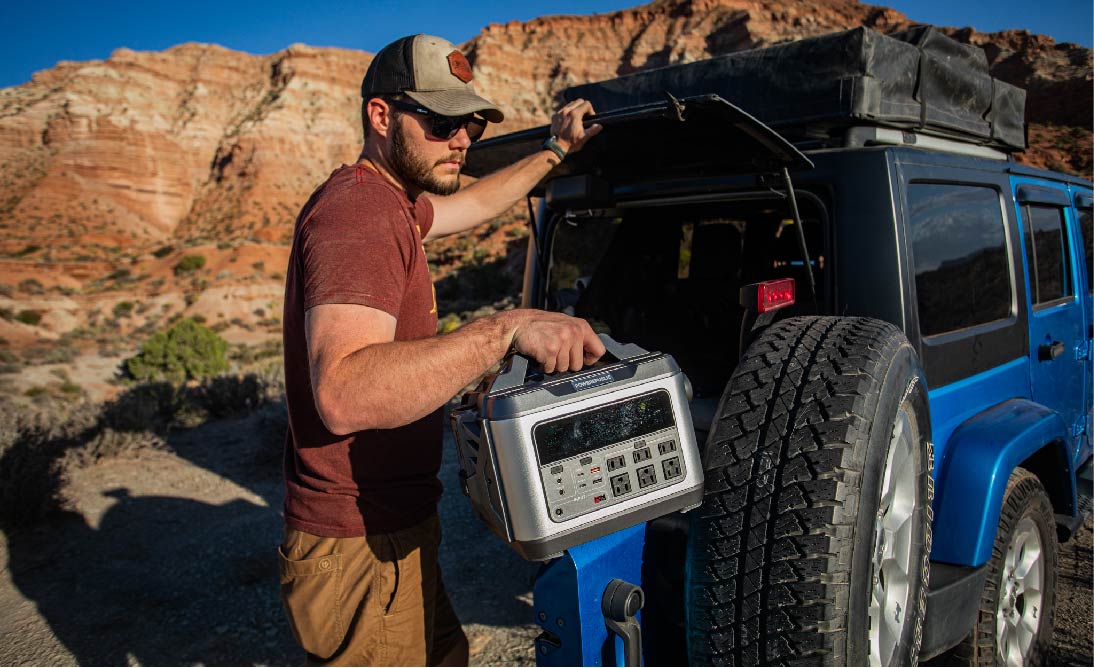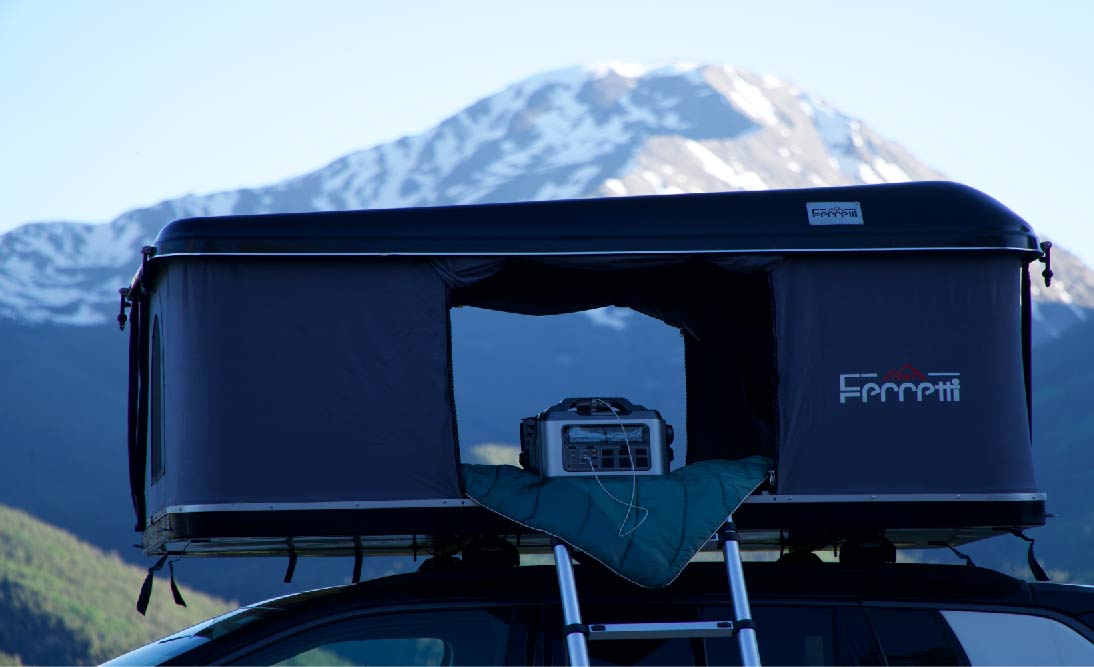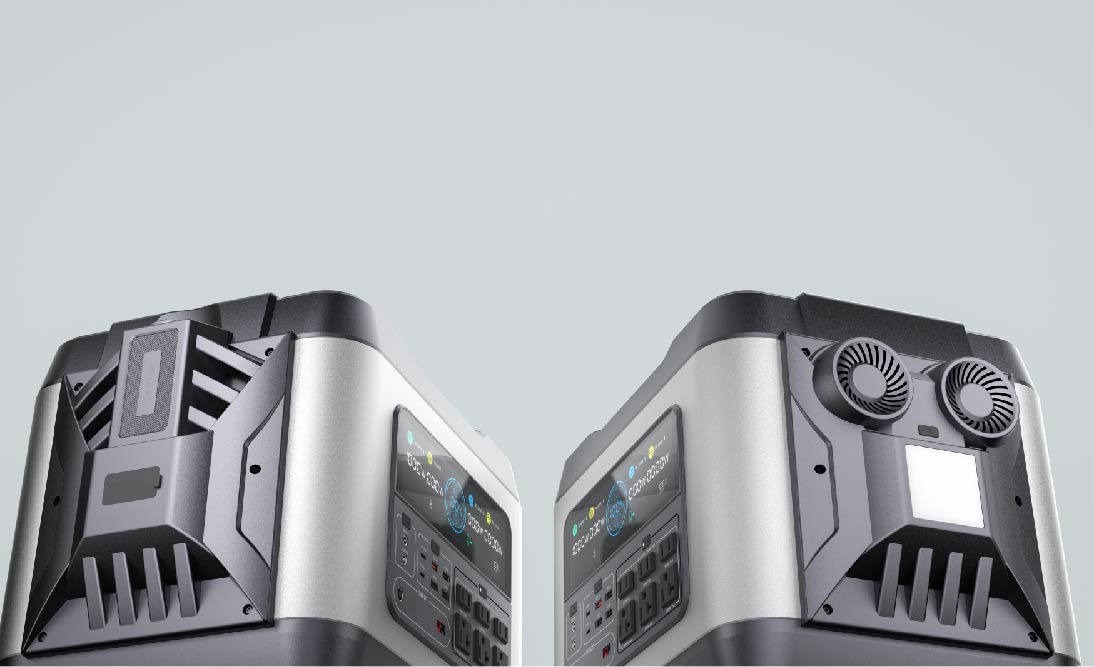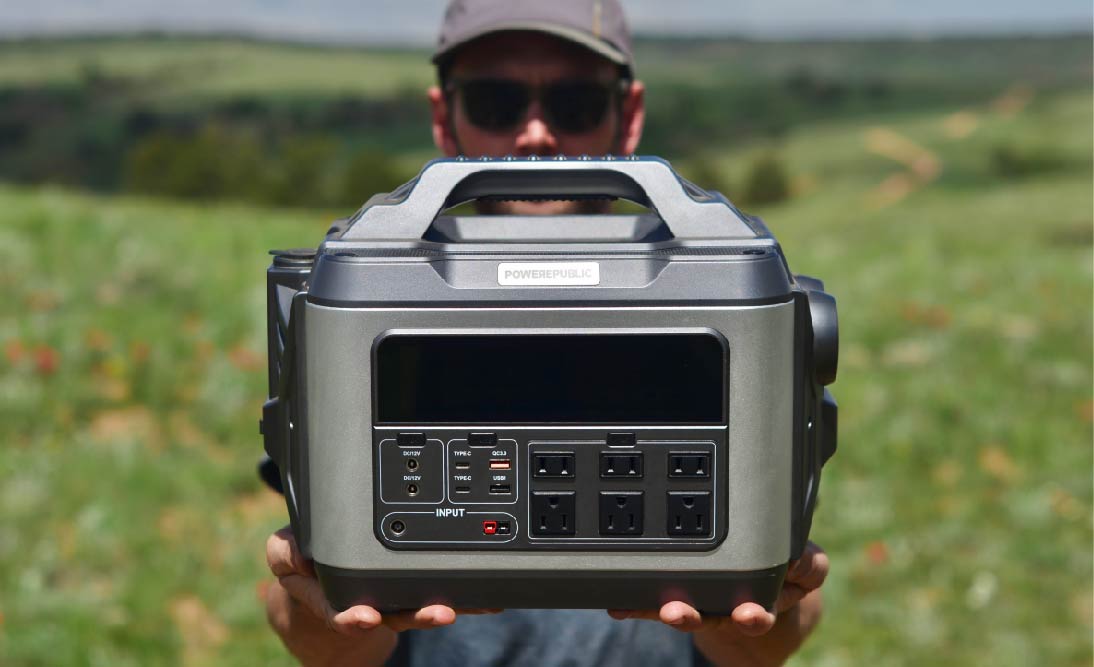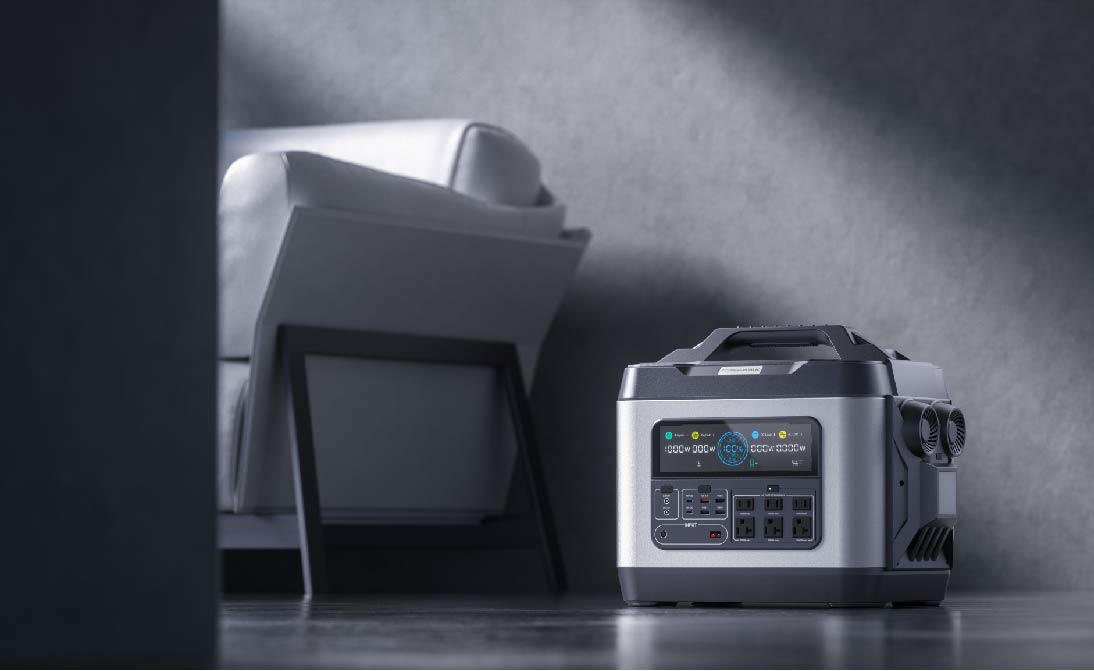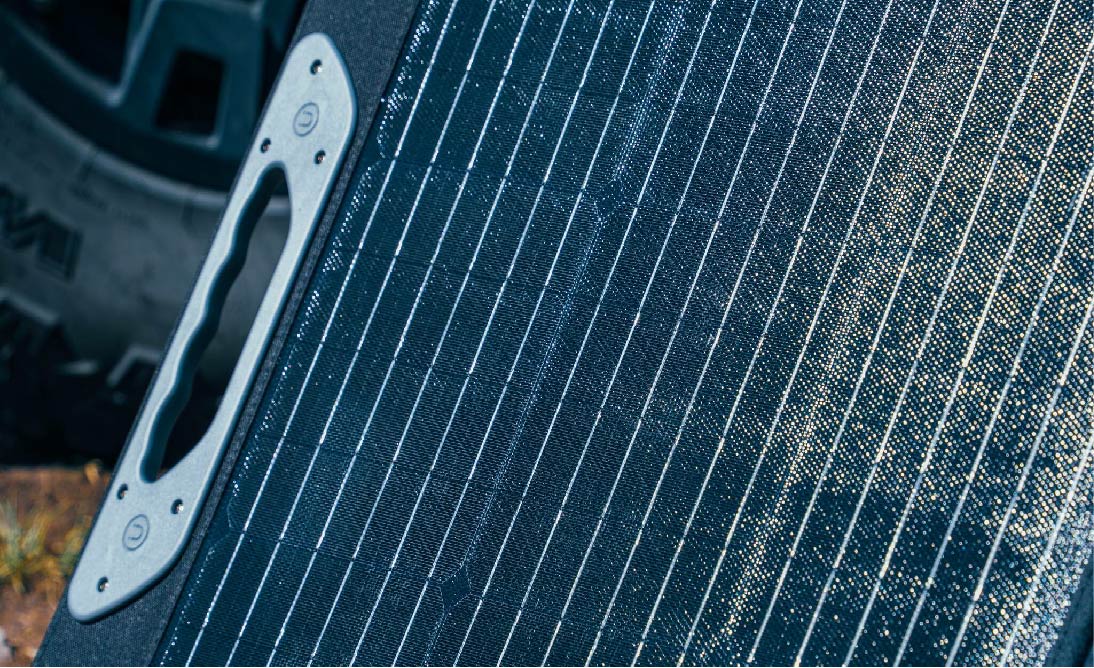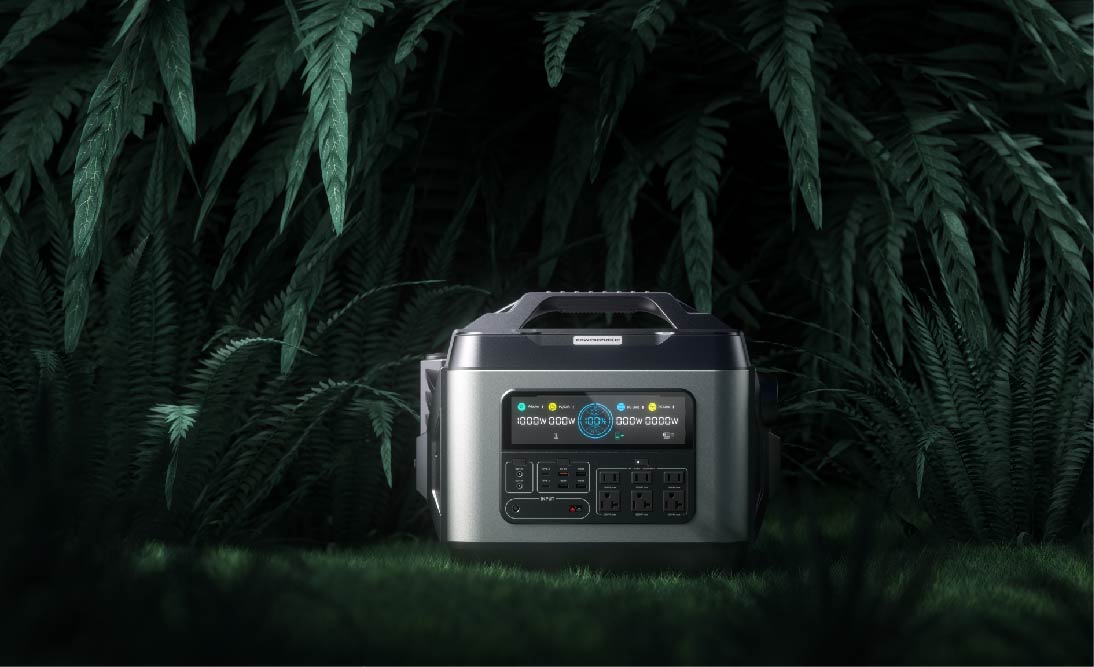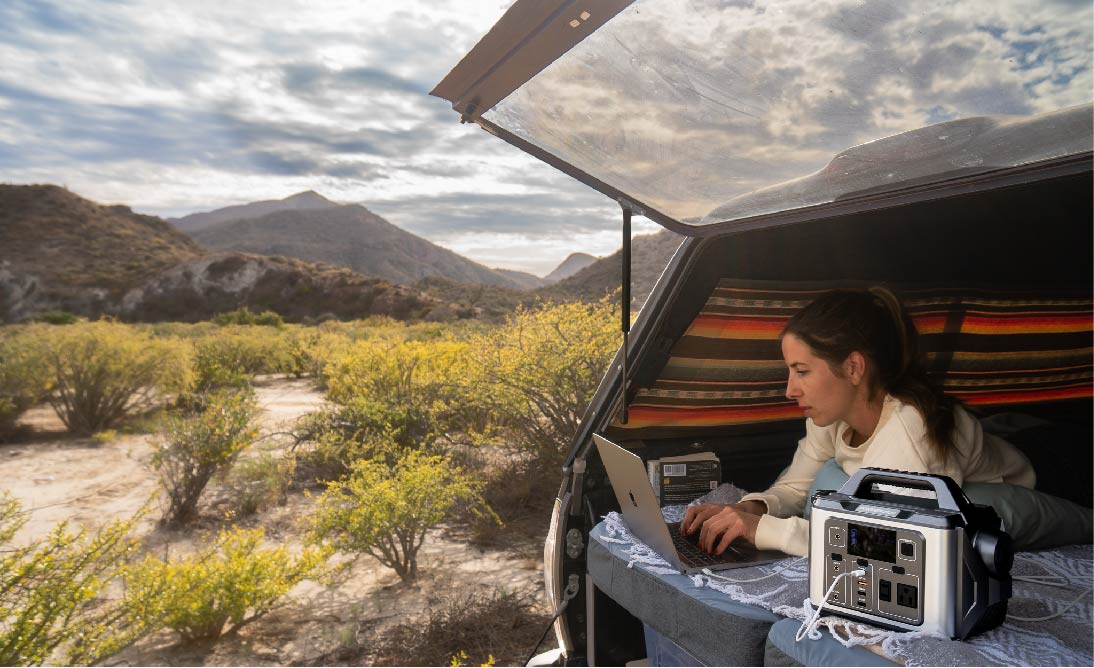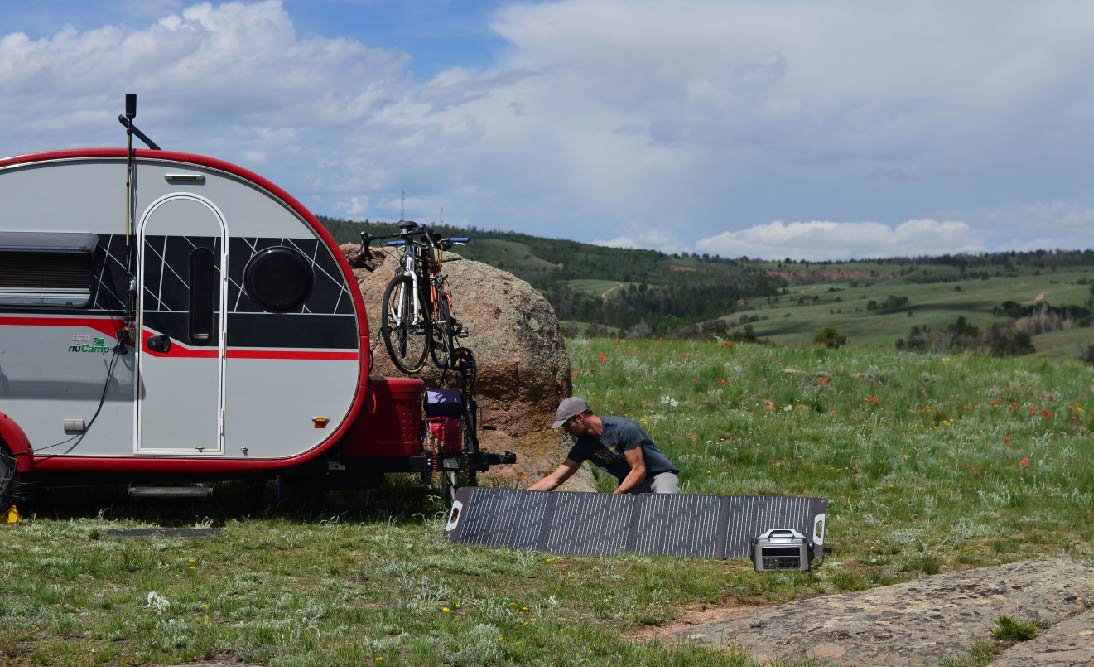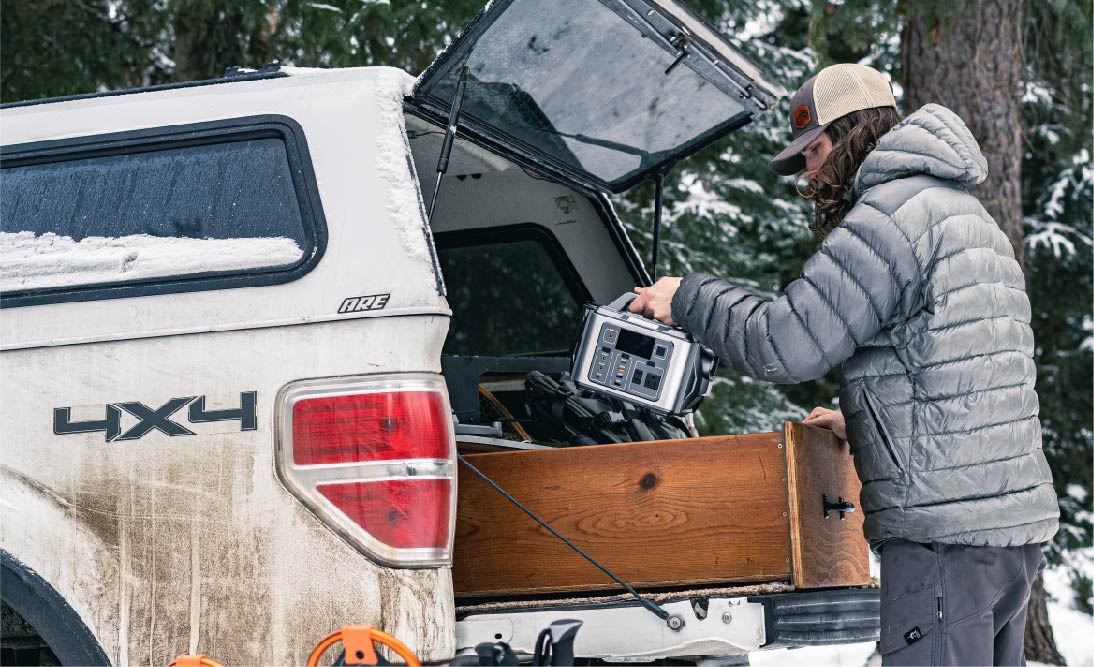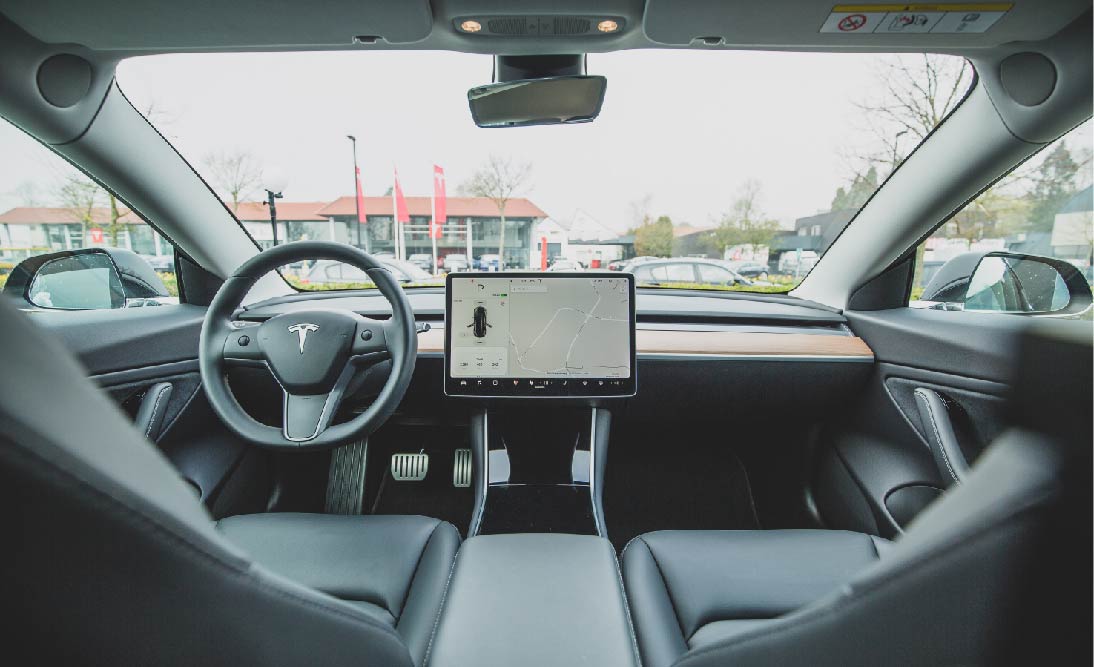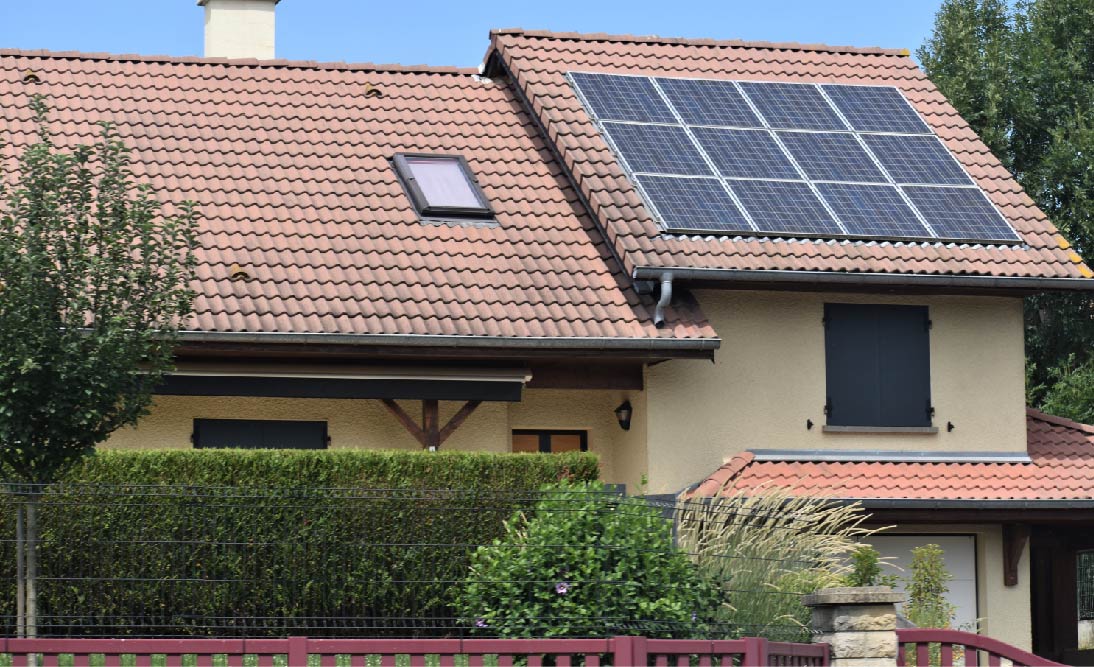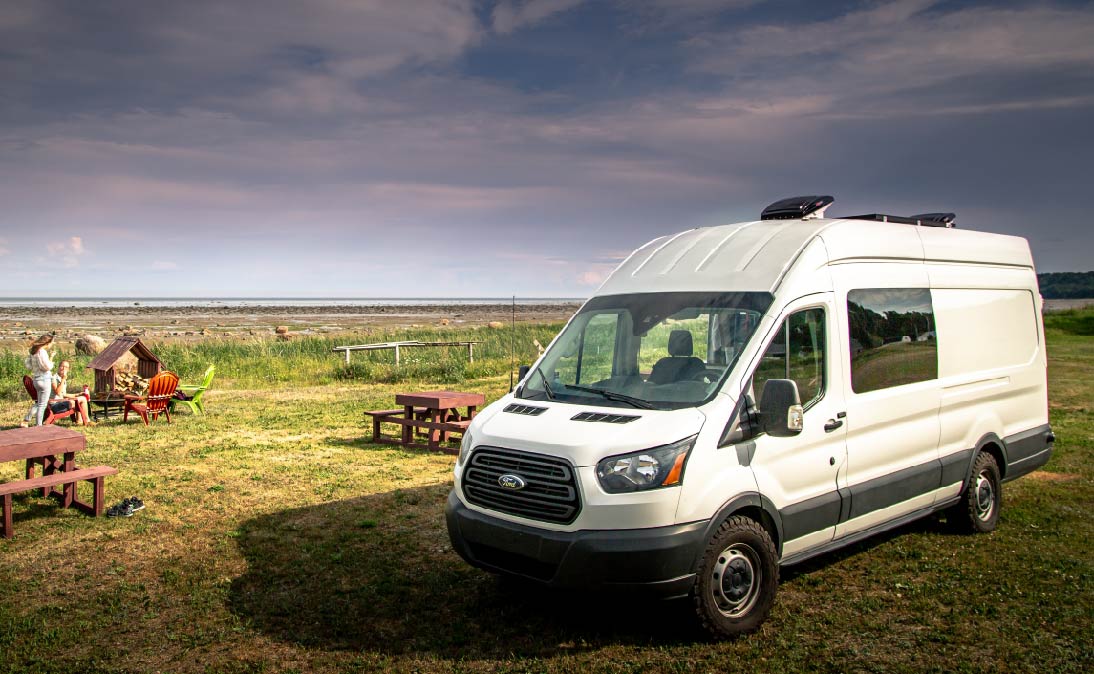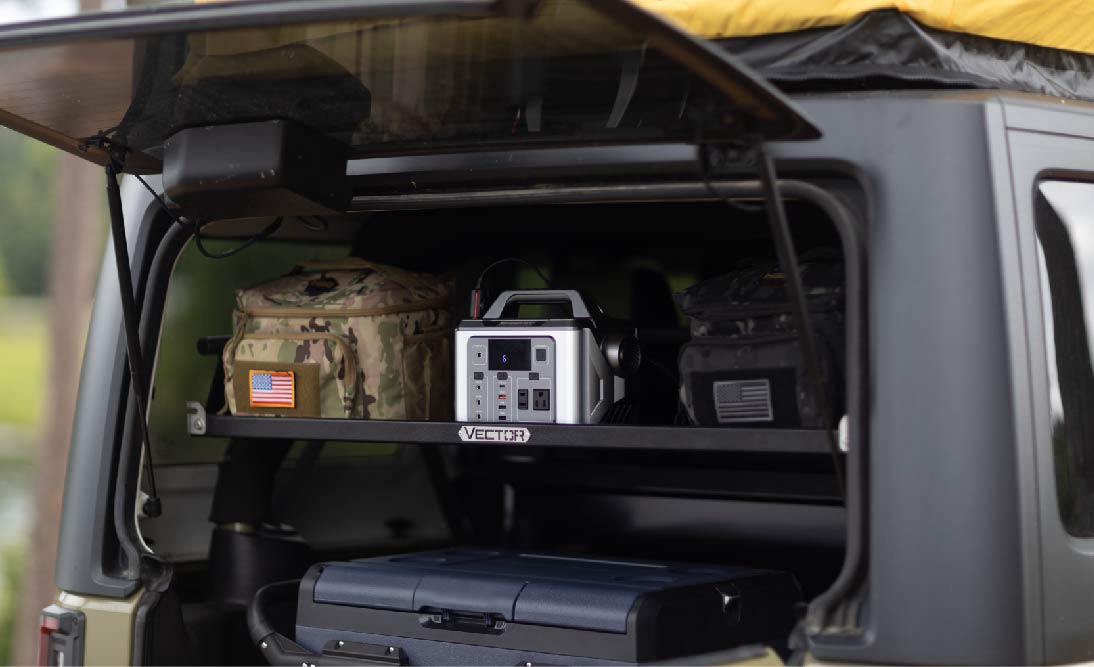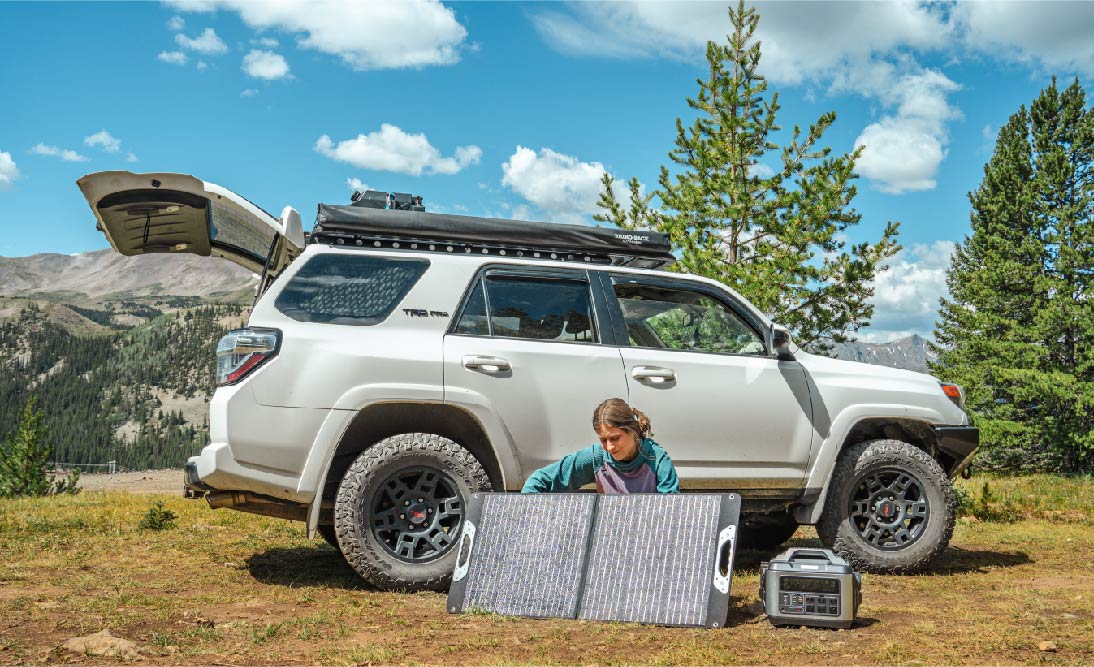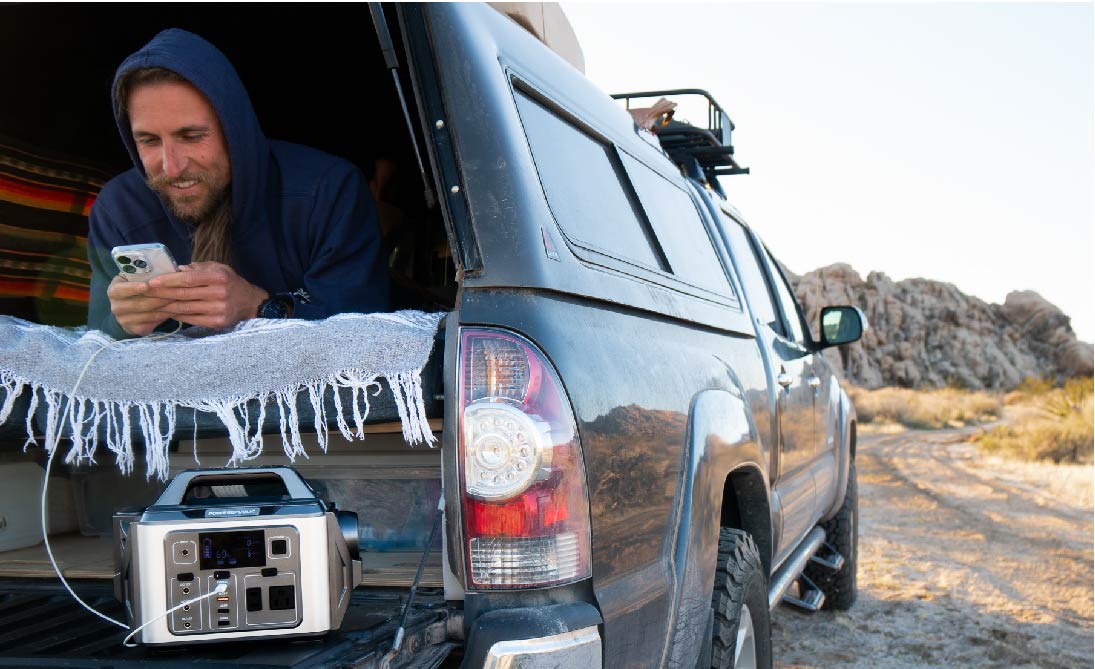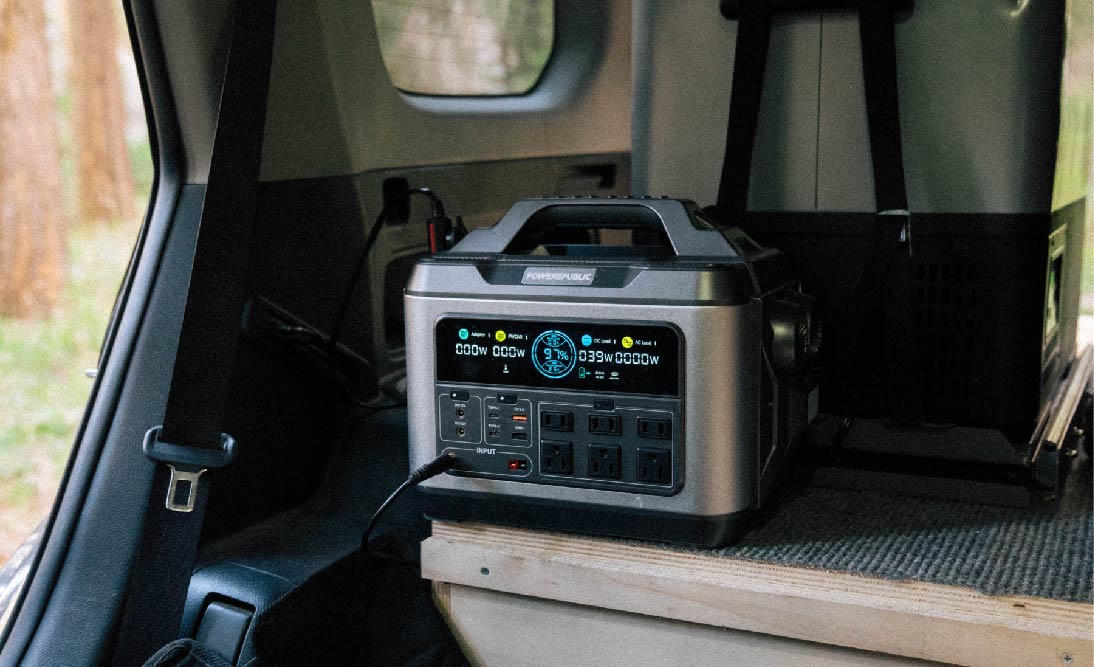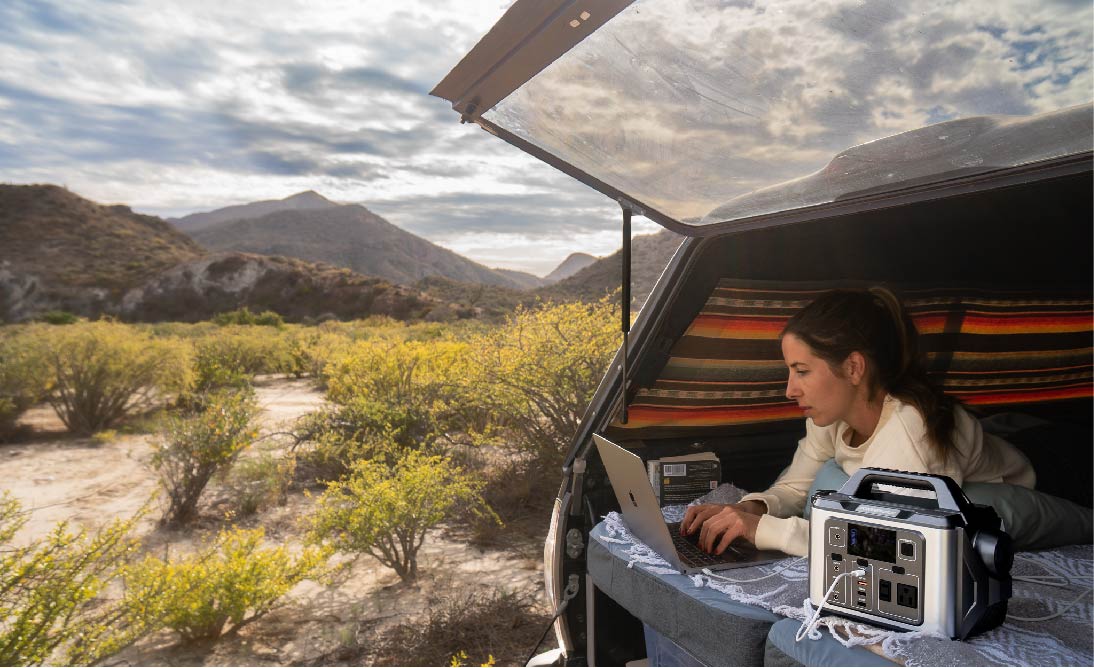Table of Contents:
We all know winter camping isn't easy.
If you're visiting areas with warm weather, that's fine. However, if you find yourself in cold weather or are planning a trip to chilly locations, staying warm becomes the key challenge. Carrying a space heater or mini-heater is not convenient, and most space heaters require at least 800W power to run. That's where electric blankets come into play. They are lightweight, compact, require minimal power, and can keep you warm inside your van, RV, or vehicle, making them ideal for winter camping.
There are two main types of electric blankets: solar-powered electric blankets and traditional electric blankets that need batteries or power stations to run. In this blog, we will discuss what they are, and how they work, compare their similarities and differences, and introduce the POWEREPUBIC portable power station designed for electric blankets to make your trip easier.
So, let's get started!
What are Solar-Powered Electric Blankets?

Solar-powered electric blankets are innovative heating devices designed to harness solar energy for warmth. Unlike traditional electric blankets that rely on electricity from the grid or batteries, solar-powered electric blankets use photovoltaic technology to convert sunlight into electrical power. These blankets typically have integrated solar panels that capture and store solar energy, allowing you to enjoy a sustainable and eco-friendly source of heat.
Key features of solar-powered electric blankets may include:
-
Built-in Solar Panels: These blankets come with solar panels embedded in the fabric. These panels are responsible for converting sunlight into electricity.
-
Portable and Lightweight: Solar-powered electric blankets are designed to be lightweight and portable, making them suitable for outdoor activities such as camping, hiking, or RV trips.
-
Energy Storage: Some solar-powered blankets may include a built-in battery or storage system. This allows you to store excess energy during sunny periods and use it later when the sun is not available.
-
USB Charging Capability: Some models may have USB ports, allowing you to charge electronic devices such as smartphones or tablets using the stored solar energy.
-
Temperature Control: Similar to traditional electric blankets, solar-powered versions often come with adjustable temperature settings, providing you with personalized comfort.
-
Versatility: Solar-powered electric blankets can be used in various settings, from outdoor adventures to emergencies where access to conventional power sources is limited.
Solar-powered electric blanket blankets offer an eco-friendly alternative for individuals who want to stay warm without relying on conventional power sources, making them especially appealing for those who enjoy outdoor activities in colder climates or off-grid living.
How Do They Work?

Solar-powered electric blankets work by utilizing photovoltaic technology to convert sunlight into electrical energy.
Here's a basic explanation of how they operate:
-
Integrated Solar Panels: Solar-powered electric blankets are equipped with built-in solar panels typically made from photovoltaic (PV) cells. These cells are designed to capture sunlight and convert it into direct current (DC) electricity.
-
Conversion of Sunlight to Electricity: When the solar panels are exposed to sunlight, the PV cells absorb photons from the sunlight, initiating a process that generates an electric current. This is the basic principle of the photovoltaic effect.
-
Storage of Electrical Energy: Some solar-powered electric blankets may include a built-in battery or energy storage system. The generated electrical energy is stored in these batteries, allowing you to use the blanket even when there is no direct sunlight. This is especially useful during nighttime or cloudy days.
-
Temperature Regulation: Solar-powered electric blankets often come with temperature control settings. You can adjust the level of warmth according to their preferences. The stored energy is then used to power the heating elements within the blanket.
-
Usage and Recharging: You can unfold or spread the blanket in a location where it receives sunlight. As the solar panels capture sunlight, they generate electricity, which can be used to heat the blanket. The excess energy can be stored for later use or used to charge other devices through USB ports if the blanket has such features.
It's important to note that the efficiency of solar-powered electric blankets depends on the intensity of sunlight, the angle of the panels relative to the sun, and the overall design of the blanket. While these blankets provide a sustainable and portable heating solution, they may not be as powerful or offer continuous warmth during periods of low sunlight. You should consider the weather conditions and charging time for optimal performance.
Pros and Cons Of Solar-Powered Electric Blankets

Now that you have learned about the definition and operation of solar-powered electric blankets, let's delve into their benefits and drawbacks. This will help you gain a better understanding before making a purchase.
Pros of Solar-Powered Electric Blankets
-
Sustainability: One of the primary advantages is their eco-friendly nature. Solar-powered electric blankets use renewable energy from the sun, reducing reliance on conventional power sources and minimizing the carbon footprint.
-
Portability: Solar-powered blankets are designed to be lightweight and portable, making them convenient for outdoor activities such as camping, hiking, or picnics. They are also suitable for use in off-grid locations.
-
Cost Savings: Over the long term, you may experience cost savings, as solar-powered electric blankets use free and abundant solar energy. This can be especially beneficial for individuals who frequently engage in outdoor activities.
-
Emergency Preparedness: Solar-powered blankets can be valuable in emergencies where access to electricity may be limited. The ability to harness solar energy provides a reliable source of warmth during power outages or natural disasters.
-
Low Operating Costs: Once the initial investment is made, there are minimal ongoing operating costs. Solar energy is free, and there is no need to continually purchase batteries or rely on traditional power sources.
Cons of Solar-Powered Electric Blankets
-
Dependence on Sunlight: The effectiveness of solar-powered blankets is dependent on sunlight. During cloudy days or nighttime, these blankets may not provide sufficient warmth unless they have a backup power source or energy storage system.
-
Charging Time: Solar-powered blankets may require extended exposure to sunlight for effective charging. In situations with limited sunlight, the charging process may be slow, affecting the overall usability of the blanket.
-
Initial Cost: The upfront cost of solar-powered electric blankets, especially those with advanced features or integrated storage systems, can be higher compared to traditional electric blankets.
-
Limited Heating Power: Solar-powered blankets may not generate as much heat as traditional electric blankets that are directly connected to a power source. This limitation may impact their ability to provide intense warmth in extremely cold conditions.
-
Durability and Maintenance: The integrated solar panels could be susceptible to wear and tear over time, affecting the overall durability of the blanket. Regular maintenance and careful handling may be necessary to ensure longevity.
While solar-powered electric blankets offer a sustainable and portable heating solution, you should weigh these pros and cons based on their specific needs, intended use, and environmental conditions.
What are Traditional Electric Blankets?

Traditional electric blankets are bedding accessories designed to provide warmth and comfort by using electrical heating elements embedded within the blanket. These blankets typically consist of a soft outer fabric, such as polyester or fleece, and are equipped with wires or heating elements that distribute heat evenly across the surface. The electric components are safely insulated within the layers of the blanket.
Key features of traditional electric blankets include:
-
Adjustable settings: Most electric blankets come with adjustable heat settings, allowing you to choose their preferred level of warmth.
-
Safety features: To ensure your safety, these blankets often incorporate features such as auto-shutoff timers that turn off the heating element after a certain period. This prevents the blanket from overheating and reduces the risk of accidents.
-
Easy maintenance: Traditional electric blankets are generally easy to care for and can be machine-washed, provided that the electrical components are removable or well-protected.
-
Dual controls: Some electric blankets designed for shared beds have dual controls, allowing each person to adjust the heat on the side of the bed independently.
-
Power source: These blankets are usually powered by a standard electrical outlet, and the cord is designed to be long enough to reach nearby outlets without causing inconvenience.
It's important to follow the manufacturer's instructions and safety guidelines when using electric blankets to ensure proper operation and prevent any potential hazards. Additionally, you should be cautious about using electric blankets with damaged cords or visible signs of wear and tear. Electric blankets have evolved, and newer models may offer additional features or improvements in design.
How Do They Work?

Traditional electric blankets work by using insulated electrical wires or heating elements embedded within the blanket. These elements are typically made of a conductive material that produces heat when an electric current passes through it. The wires are distributed evenly across the blanket to ensure uniform heating.
-
Wiring Structure: The heating elements are woven into the fabric and connected to a power cord that plugs into a standard electrical outlet.
-
Control Unit: The electric blanket usually comes with a control unit that allows you to adjust the heat settings. This control unit is often detachable for easy cleaning of the blanket.
-
Safety Features: Many electric blankets include safety features such as temperature sensors and timers. Temperature sensors help regulate the heat to prevent the blanket from becoming too hot, while timers automatically shut off the blanket after a certain period to prevent prolonged use.
-
Insulation: The heating elements are insulated to ensure that you do not come into direct contact with them. The insulation also helps distribute the heat evenly across the surface of the blanket.
Pros and Cons Of Traditional Electric Blankets

Now that you have learned about the definition and operation of traditional electric blankets, let's delve into their benefits and drawbacks. This will help you gain a better understanding before making a purchase.
Pros of Traditional Electric Blankets
-
Warmth Control: You can adjust the heat settings according to their comfort, providing a customizable level of warmth.
-
Cost-Effective: Electric blankets are often more energy-efficient and cost-effective than heating an entire room.
-
Quick Heating: They can heat up quickly, providing almost instant warmth.
-
Versatility: Electric blankets can be used on beds, couches, or any place where you want extra warmth.
-
Dual Controls: Some models come with dual controls for shared beds, allowing each person to set their preferred temperature.
Cons of Traditional Electric Blankets
-
Safety Concerns: If used improperly or if the blanket is damaged, there can be safety concerns such as overheating or electric shocks.
-
Wear and Tear: Over time, the wires inside the blanket can wear out, leading to potential malfunctions.
-
Not Suitable for Certain Individuals: People with certain medical conditions, such as diabetes or neuropathy, or those who are less sensitive to heat, may need to exercise caution when using electric blankets.
-
Limited Mobility: The presence of a power cord may limit your mobility while in bed.
-
Maintenance Challenges: While some electric blankets are machine-washable, the presence of electrical components may require special care.
Before using an electric blanket, it's crucial to read and follow the manufacturer's instructions and safety guidelines to ensure proper usage and minimize any risks.
Solar-Powered Electric Blankets Vs. Traditional Electric Blankets

While solar-powered electric blankets and traditional electric blankets differ from each other, they share some similarities and differences. Let's examine these aspects:
Similarities
1. Heating Element:
-
Both types of blankets incorporate an electric heating element to generate warmth.
2. Temperature Control:
-
Solar-powered and traditional electric blankets typically offer adjustable temperature controls, allowing you to customize their level of warmth.
3. Material and Design:
-
The materials and overall design of both types of blankets focus on providing comfort and insulation.
4. Safety Features:
-
Both solar-powered and traditional electric blankets often include safety features, such as automatic shutoff mechanisms, to prevent overheating and ensure your
Differences
1. Power Source
Solar-Powered Electric Blankets:
-
Utilize integrated solar panels to capture sunlight and convert it into electricity for heating.
-
Rely on renewable energy, making them environmentally friendly.
-
Portability is enhanced as they can operate without a direct electrical connection.
-
Depends on sunlight availability, which may limit effectiveness during cloudy days or at night.
Traditional Electric Blankets:
-
They are powered by electricity from the grid, requiring a direct connection to an electrical outlet.
-
May contribute to a carbon footprint depending on the energy mix of the local electrical grid.
-
Limited portability as they need to be used near an electrical outlet.
2. Portability
Solar-Powered Electric Blankets:
-
Generally more portable, suitable for outdoor activities, camping, or off-grid situations.
-
Can be used in remote locations where traditional power sources are unavailable.
Traditional Electric Blankets:
-
Limited portability due to the need for a continuous electrical supply.
-
They are typically used in indoor settings near electrical outlets.
3. Environmental Impact
Solar-Powered Electric Blankets:
-
Environmentally friendly, using renewable solar energy.
-
Reduced carbon footprint and reliance on non-renewable resources.
Traditional Electric Blankets:
-
May contribute to environmental impact depending on the energy source (renewable or non-renewable) of the electrical grid.
4. Charging and Usage
Solar-Powered Electric Blankets:
-
Charging depends on exposure to sunlight, and excess energy can be stored for later use.
-
Effectiveness may vary based on weather conditions and charging time.
Traditional Electric Blankets:
-
Immediate usage upon plugging into an electrical outlet.
-
No dependence on external factors like sunlight.
5. Cost
Solar-Powered Electric Blankets:
-
Potentially higher upfront cost due to integrated solar technology.
-
Long-term cost savings with free solar energy.
Traditional Electric Blankets:
-
Generally more affordable upfront.
-
Operating cost depends on electricity rates in the area.
6. Versatility
Solar-Powered Electric Blankets:
-
Versatile for outdoor activities, emergencies, and off-grid living.
-
May have additional features like USB charging capability.
Traditional Electric Blankets:
-
Versatile for indoor use on beds, couches, etc.
-
Typically lacks features like USB ports.
The choice between solar-powered and traditional electric blankets depends on individual preferences, intended use, and environmental considerations. Solar-powered blankets offer sustainability and portability but are weather-dependent, while traditional blankets provide immediate and continuous warmth but are tied to electrical outlets.
Consider the specific needs of your situation, such as camping or indoor use, to make an informed decision. Additionally, weigh factors like upfront cost, environmental impact, and the availability of sunlight in your region.
How Many Watts Does an Electric Blanket Use?

1. Solar-Powered Electric Blankets
They are designed to be energy-efficient, utilizing solar panels for warmth. The wattage may vary based on factors like blanket size, solar panel efficiency, and sunlight availability.
Low to Moderate Wattage:
-
Smaller solar-powered blankets may have a wattage as low as 5 to 10 watts.
-
Medium-sized blankets could range from 15 to 20 watts.
-
Larger and more powerful solar blankets may go up to 30 watts.
Dependence on Sunlight:
-
The wattage output can fluctuate based on the intensity of sunlight. During optimal conditions, the blanket may reach its maximum wattage, providing higher warmth.
USB Charging Capability:
-
Models with additional features, like USB ports for device charging, may have a separate wattage specification for charging, usually in the range of 5 to 10 watts.
2. Traditional Electric Blankets
They are directly plugged into an electrical outlet, providing consistent and adjustable warmth. The wattage depends on the size, heat settings, and specific design features.
Moderate to High Wattage:
-
Smaller electric blankets may start around 60 watts.
-
Standard-sized blankets typically range between 80 to 100 watts.
-
Larger and high-performance models can go up to 120 watts or more.
Dual-Control Models:
-
Dual-control electric blankets, designed for shared beds, may have dual power cords, each contributing to the total wattage. In such cases, each side might operate in the 40W to 60W range.
How To Choose the Ideal Electric Blanket?

Choosing the suitable electric blanets, either solar-powered or traditional, is not an easy task. Factors like individual preferences, intended use, and environmental considerations should be considered. By asking yourself the following questions, we hope you will figure out which one to choose.
1. What are the key factors to consider when choosing between solar-powered and traditional electric blankets?
The choice between solar-powered and traditional electric blankets hinges on several factors, including individual preferences, intended use, and environmental considerations. If sustainability and portability are crucial, a solar-powered blanket might be ideal. However, keep in mind that it is weather-dependent. On the other hand, traditional blankets offer immediate and continuous warmth but are tied to electrical outlets.
2. How can I determine which type of electric blanket suits my specific needs?
Consider the intended use of the electric blanket. If you plan to use it for outdoor activities like camping, a solar-powered blanket may be more suitable due to its portability. For indoor use where a continuous power source is available, a traditional electric blanket may provide more reliable warmth.
3. What are the advantages of solar-powered electric blankets?
Solar-powered electric blankets are environmentally friendly and sustainable. They harness solar energy, reducing reliance on traditional power sources. Additionally, their portability makes them ideal for on-the-go activities such as camping or picnics.
4. What are the drawbacks of solar-powered electric blankets?
The main drawback of solar-powered blankets is their dependence on weather conditions. They require sunlight to charge, and overcast or rainy days may impact their effectiveness. This makes them less suitable for certain climates or seasons.
5. What are the benefits of traditional electric blankets?
Traditional electric blankets offer immediate and continuous warmth, providing comfort on demand. They are not weather-dependent, making them reliable for indoor use during colder months. Additionally, they are typically available in various sizes and designs.
6. Are there any considerations for environmental impact when choosing an electric blanket?
Yes, environmental impact is an important factor. Solar-powered blankets have a lower carbon footprint as they rely on renewable energy. Traditional blankets, however, contribute to electricity consumption. Consider your commitment to sustainability and the impact of your choice on the environment.
7. How do upfront costs differ between solar-powered and traditional electric blankets?
Solar-powered blankets may have a higher upfront cost due to the technology involved, including solar panels. Traditional electric blankets, while generally more affordable, may have lower long-term operational costs depending on your electricity rates.
8. What should I consider regarding the availability of sunlight in my region when choosing a solar-powered electric blanket?
The effectiveness of solar-powered blankets depends on sunlight availability. If you live in an area with frequent cloudy or rainy weather, a solar-powered blanket might not be the most reliable option. Consider your region's climate and sunlight patterns before making a decision.
POWEREPUBLIC Portable Power Stations For Electric Blankets

We understand that you cannot recharge a solar-powered electric blanket using AC outlets. However, when taking a traditional electric blanket for winter camping, it's crucial to have a reliable, long-lasting, and safe power solution to keep it heated for a couple of hours.
POWEREPUBLIC offers four different portable power stations suitable for traditional electric blankets. You can choose based on your budget, power needs, and the duration you want to power it. For a better understanding and comparison, we have created a table listing some features and specs of our models, along with the estimated duration they can power a traditional electric blanket.
|
Models |
Specs and Features |
Electric Blankets(W) |
Working Time(hrs) |
|
Small: 60W Medium: 80W - 100W Large: 120W - 150W |
Small: 4 Medium: 2.5 - 3 Large: 1.5 - 2 |
|
|
Small: 60W Medium: 80W - 100W Large: 120W - 150W |
Small: 15.5 Medium: 9.5 - 11.5 Large: 6 - 7.5 |
|
|
Small: 60W Medium: 80W - 100W Large: 120W - 150W |
Small: 31.5 Medium: 19 - 23.5 Large: 12.5 - 15.5 |
|
|
Small: 60W Medium: 80W - 100W Large: 120W - 150W |
Small: 45 Medium: 27 - 34 Large: 18 - 22.5 |
Please note that the working time is estimated using the formula below:
-
Working Time(in Hours)= Capacity of the Portable Power Station(Wh)*0.85(Conversion rate) / Power of the Devices(W).
-
If you need to power other devices and appliances simultaneously, the working time for the electric blanket will decrease. Always know your power needs before choosing a portable power station.
Final Thoughts
In conclusion, choosing between solar-powered and traditional electric blankets depends on your specific needs and preferences. Solar-powered blankets offer sustainability and portability, making them ideal for outdoor activities and off-grid living. However, their effectiveness is weather-dependent, and the upfront cost may be higher. Traditional electric blankets provide immediate and continuous warmth indoors but are tied to electrical outlets.
For winter camping with traditional electric blankets, POWEREPUBLIC offers portable power stations with various capacities to suit different power needs. These stations ensure a reliable, long-lasting, and safe power source, allowing you to enjoy the warmth of your blanket for extended periods. Consider factors such as power requirements, budget, and duration needed when selecting a POWEREPUBLIC portable power station to enhance your winter camping experience. Always assess your power needs and environmental conditions to make an informed decision on the most suitable electric blanket and power solution for your situation.
